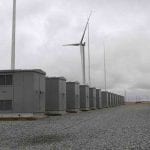Around The Web
South Australia commits $180m to batteries, storage and virtual power plants
 South Australia government to target 5,000 homes this financial year as its Home Battery Storage grants plan finally moves ahead. Its part of a suite of initiatives to support transition to renewables grid.
South Australia government to target 5,000 homes this financial year as its Home Battery Storage grants plan finally moves ahead. Its part of a suite of initiatives to support transition to renewables grid.
The post South Australia commits $180m to batteries, storage and virtual power plants appeared first on RenewEconomy.
Why baseload coal has no future in a modern grid
 The debate about the need for baseload coal-fired power stations has reignited with the Coalition saying it would welcome a new coal-fired power station to the country.
The debate about the need for baseload coal-fired power stations has reignited with the Coalition saying it would welcome a new coal-fired power station to the country.
The post Why baseload coal has no future in a modern grid appeared first on RenewEconomy.
Sylvia , 70, completes round-Australia trip in an EV for …. $150.90
 Although she’s too modest to agree with the description, retired farmer Sylvia Wilson is an electric vehicle pioneer.
Although she’s too modest to agree with the description, retired farmer Sylvia Wilson is an electric vehicle pioneer.
The post Sylvia , 70, completes round-Australia trip in an EV for …. $150.90 appeared first on RenewEconomy.
Energy Insiders Podcast: Would conservatives try to stop clean energy if it wasn’t about emissions?
 With wind, solar and storage clearly beating fossil fuels on costs, would conservatives seek to stop that investment if it were not also about emissions? Emma Herd, from the IGCC, joins us for a fascinating discussion.
With wind, solar and storage clearly beating fossil fuels on costs, would conservatives seek to stop that investment if it were not also about emissions? Emma Herd, from the IGCC, joins us for a fascinating discussion.
The post Energy Insiders Podcast: Would conservatives try to stop clean energy if it wasn’t about emissions? appeared first on RenewEconomy.
CP Daily: Tuesday September 4, 2018
The tree that bleeds... metal?
First known omnivorous shark species identified
60% of the bonnethead shark’s diet is made up of seagrass, which they happily graze upon as well as eating fish, crabs, snails and shrimp
It is one of the most radical rebrandings in history: contrary to their bloodthirsty image, some sharks are not irrepressible meat eaters, but are happy to munch on vegetation too.
According to US researchers, one of the most common sharks in the world, a relative of the hammerhead which patrols the shores of the Americas, is the first variety of shark to be outed as a bona fide omnivore.
Continue reading...Scott Pruitt wasted millions at EPA on security detail, report says
Internal watchdog found the agency has no approved procedures to determine how much security the administrator needed
The millions of dollars spent on a round-the-clock security detail for the scandal-laden former head of the US Environmental Protection Agency were not justified, according to the findings of an internal watchdog.
Scott Pruitt’s transition team asked for a 24/7 security team for him when he was appointed as head of the EPA by Donald Trump, even pulling agents from criminal investigations to guard him, in a move that dramatically escalated the cost for the taxpayer and broke with the protocol followed by his predecessors.
Continue reading...EU Market: EUAs consolidate above €20 after another weak auction
Reef foundation told to prepare to return $443.8m grant if Labor wins next election
Labor says it would use a grant agreement clause to force the return of any unspent funds
Labor has warned the Great Barrier Reef Foundation to prepare to return a $443.8m grant in the event of change of government.
Continue reading...EU carbon price hike boosts hope for Paris rulebook deal, though markets may be sacrificed
France to impose daily cap of 214 climbers on Mont Blanc
Rockfall a growing risk as high temperatures thaw ground at higher altitudes
France will impose a daily cap of 214 climbers on Mont Blanc next year, one of several measures taken to limit overcrowding on one of Europe’s highest peaks.
“It’s a tough decision but a very good one, because Mont Blanc is a climb unlike any other. You have to be prepared,” said Jean-Marc Peillex, mayor of Saint-Gervais-les-Bains, the Alpine town where the most popular route to the top of the mountain begins.
Continue reading...France names new environment minister after Hulot’s abrupt exit
New Natural History Museum room honours Mary Anning
'Farming the desert'
The life of a shark scientist
EU carbon prices to top €30 before 2020, analysts predict
First eight bird extinctions of the 21st century confirmed
Most extinctions were caused by deforestation in South America, a new study of endangered birds shows
Spix’s macaw, a brilliant blue species of Brazilian parrot that starred in the children’s animation Rio, has become extinct this century, according to a new assessment of endangered birds.
The macaw is one of eight species, including the poo-uli, the Pernambuco pygmy-owl and the cryptic treehunter, that can be added to the growing list of confirmed or highly likely extinctions, according to a new statistical analysis by BirdLife International.
Continue reading...EU lawmakers must act urgently to prevent repeat of VAT fraud on CO2, energy trade -industry
How the EV boom will reshape the way we use electricity
 AEMO has lifted its forecasts for the uptake of electric vehicles for the second time in less than six months, and flags it could have an impact on the way we manage the grid.
AEMO has lifted its forecasts for the uptake of electric vehicles for the second time in less than six months, and flags it could have an impact on the way we manage the grid.
The post How the EV boom will reshape the way we use electricity appeared first on RenewEconomy.



